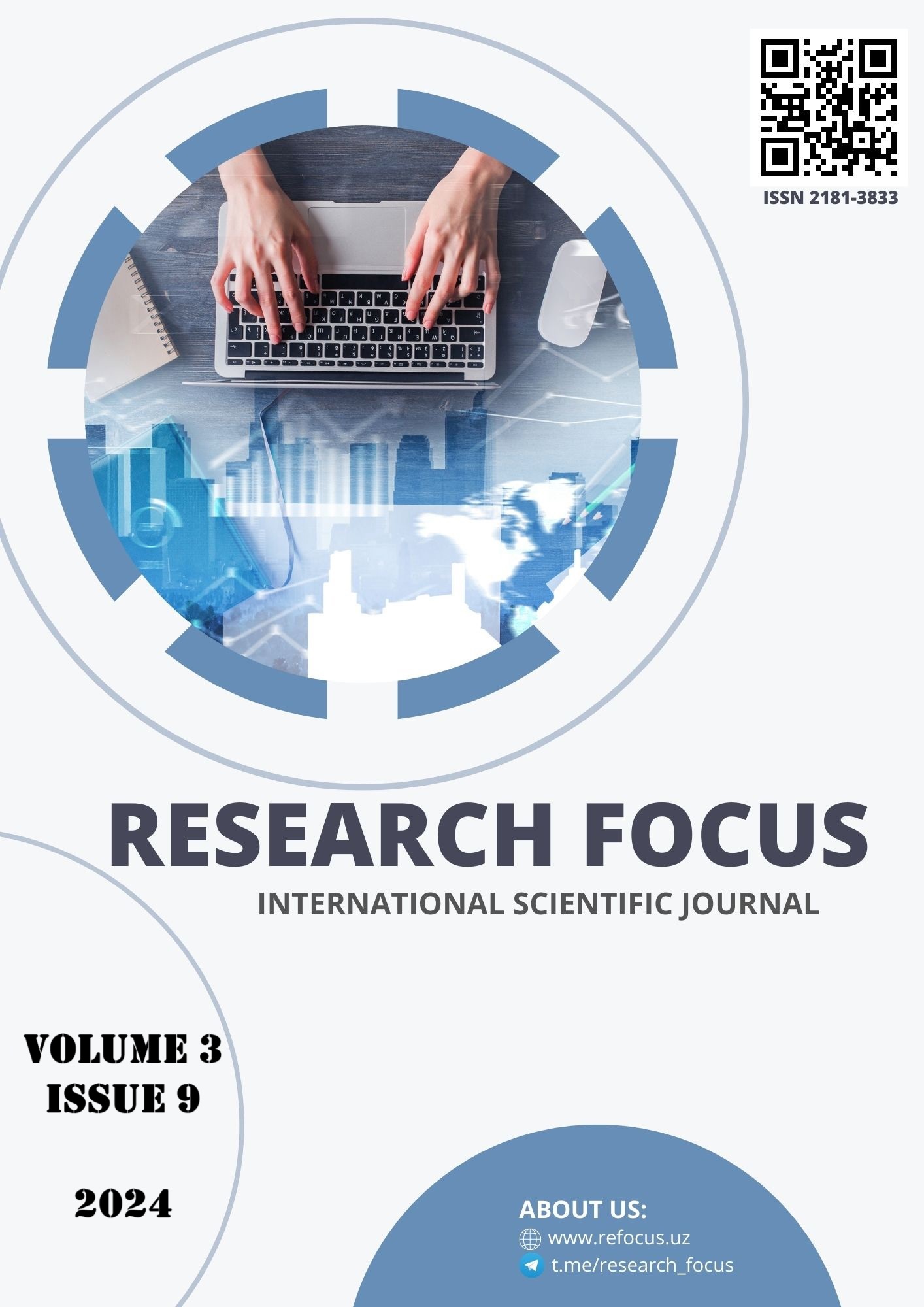SOLAR PANELS NOT FULLY EMPLOYED IN MINGBULOQ DISTRICT, NAMANGAN PROVINCE
Main Article Content
Abstract
: Renewable energy sources are resources that are naturally self-replenishing and considered environmentally sustainable. They play a crucial role in reducing greenhouse gas emissions and combating climate change. Renewable Energy Sources (RES) are becoming increasingly popular around the world because these sources are sustainable as they do not run out over time, unlike fossil fuels which are finite and contribute significantly to global warming. According to the official report of the International Energy Agency (IEA), from 2019, the demand for the use of fossil fuels for the production of electricity and the increase in the use of RES to meet the global energy requirements began to decrease. In this work, several objects that have not been fully installed and put into operation in the Mingbulok district of Namangan region, as well as suggestions for providing solutions and solving the problem are presented.
Article Details

This work is licensed under a Creative Commons Attribution 4.0 International License.
References
F. Rizzi, N.J. van Eck, M. Frey. The production of scientific knowledge on renewable energies: worldwide trends, dynamics can challenge and implications for management. Renew Energy, 62 (2014), pp. 657-671
E. Vine. Breaking Down the Silos: The Integration of Energy Efficiency, Renewable Energy, Demand Respond and Climate Change, vol. 1, Energy Efficiency (2008), pp. 49-63
S. Manish, I.R. Pillai, R. Banerjee. Sustainability analysis of renewables for climate change mitigation Energy Sustain. Dev., 10 (4) (2006), pp. 25-36
W.G. Santika, M. Anisuzzaman, P.A. Bahri, G. Shafiullah, G.V. Rupf, T. Urmee. From goals to joules: a quantitative approach of interlinkages between energy and the Sustainable Development Goals. Energy Res. Social Sci., 50 (2019), pp. 201-214
A. Raheem, S. Samo, A. Memon, S.R. Samo, Y. Taufiq-Yap, M.K. Danquah, R. Harun. Renewable energy deployment to combat energy crisis in Pakistan. Energy Sustain. Soc., 6 (1) (2016), p. 16
N. Ahmad Ludin, N.I. Mustafa, M.M. Hanafiah, M.A. Ibrahim, M.A. Mat Teridi, S. Sepeai, A. Zaharim, K. Sopian. Prospects of life cycle assessment of renewable energy from solarphotovoltaic technologies: a review. Renew. Sustain. Energy Rev., 96 (2018), pp. 11-28
R. Kardooni, S. Yusoff, F. Kari. Renewable energy technology acceptance in Peninsular Malaysia. Energy Pol., 88 (2016), pp. 1-10
IEA. Global Energy Review 2021. International Energy Agency (IEA), Paris (2021). Accessed date: 29th July 2021 Google Scholar
I. Alhamrouni, M. Danial, M. Salem, L.J. Awalin, B. Ismail. Design of 2LC-Y DC - DC converter for high voltage/low current renewable energy application. Test Eng. Manag., 83 (2020), pp. 2111-2117
M. Alhuyi Nazari, M. Salem, I. Mahariq, K. Younes, B.B. Maqableh. Utilization of data-driven methods in solar desalination systems: a comprehensive review. Front. Energy Res., 9 (2021), p. 541
C. Diakaki, E. Grigoroudis, N. Kabelis, D. Kolokotsa, K. Kalaitzekis, G. Stavrakakis. A multi-objective decision model for the improvement of energy efficiency in buildings. Energy, 35 (12) (2010), pp. 5483-5496
E. Pean et al. Role of the GB-France electricity interconnectors in integration of variable renewable generation. Renew. Energy (2016)
R.A. Rodríguez et al. Transmission needs across a fully renewable European power system Renew. Energy (2014)
Understanding the differences between On-grid, Off-grid (Hybrid), and On-grid Solar Inverters with Energy Storage Systems. FEBRUARY 8, 2024
O‘zbekiston Respublikasi Prezidentining qarori, 16.02.2023 yildagi PQ-57-son.
https://www.cleanenergyreviews.info/blog/designing-off-grid-hybrid-solar-systems 25 OCT, 2023 WRITTEN BY JASON SVARC
O‘zbekiston Respublikasining Qonuni, 07.02.2024 yildagi O‘RQ-906-son

